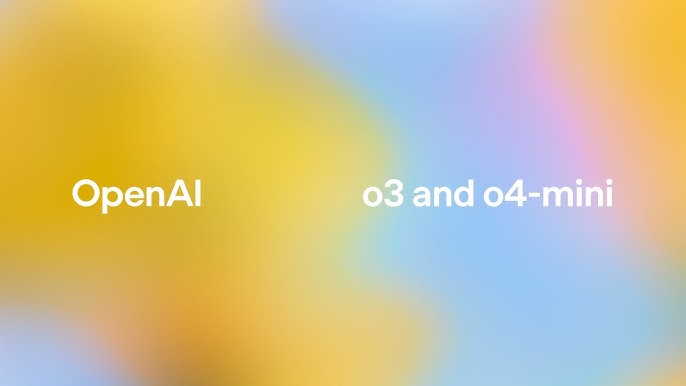OpenAI launches o4-mini: cheap, fast reasoning model

OpenAI has released o4‑mini, a smaller, cheaper, and faster member of its reasoning‑focused “o” model family, aiming to bring agent‑style reasoning to more everyday apps without the latency and cost of frontier models[9]. According to OpenAI’s announcement, o4‑mini targets practical reasoning tasks—structured planning, multi‑step tool use, and code editing—at a fraction of o4’s price, making it attractive for high‑volume workloads like customer support automation, product search, and analytics copilots[9]. Early benchmarks cited by OpenAI indicate competitive performance on math and coding tasks relative to much larger models, with substantial latency and cost savings in production[9].
Why this matters
- Reasoning at scale: By cutting cost and latency while maintaining strong chain‑of‑thought style performance, o4‑mini lowers the barrier to deploying agentic features broadly in consumer and enterprise products[9].
- Operational efficiency: Teams can iterate on workflows—retrieval, tool use, function calling—without paying “frontier‑model taxes,” enabling finer‑grained A/B testing and faster release cycles[9].
What’s new in o4‑mini
- Optimized for tool use and planning: OpenAI emphasizes improvements for multi‑step calls with structured outputs and external tools, making it better suited for autonomous or semi‑autonomous task execution[9].
- Production‑ready economics: Pricing and throughput are tuned for scale, with per‑token costs significantly below o4 while preserving competitive accuracy on practical coding and math benchmarks[9].
- Latency and reliability: OpenAI highlights reduced response times and more stable function‑calling schemas, boosting reliability in orchestration stacks[9].
How it compares
- Versus larger “o” models: o4‑mini trades some peak benchmark scores for major gains in cost and speed, positioning it as a default choice for high‑QPS applications and background agents, while o4 remains best for the hardest reasoning queries[9].
- Against rival offerings: The release lands amid renewed competition on reasoning and agentic workloads, with Anthropic emphasizing agent capabilities in Claude Opus 4.1 and setting a new SWE‑bench Verified high score[5]. For teams already on OpenAI tooling, o4‑mini’s economics could outweigh incremental accuracy gaps for many real‑world tasks[5][9].
Early use cases
- Support copilots: Summarizing tickets, proposing resolutions, and triggering workflows with tools and RAG backends at lower cost per interaction[9].
- Analytics agents: Planning multi‑step SQL generation, validation, and chart creation with stronger guardrails and faster iteration[9].
- Developer assistants: Lightweight code edits, refactors, and test generation where speed and price trump marginal benchmark gains[5][9].
What experts are watching
- Evaluation transparency: Practitioners want reproducible, task‑grounded evaluations (SWE‑bench, LiveCodeBench, GPQA) beyond internal claims to validate the speed/quality trade‑off in production[5].
- Agent reliability: Consistency across long tool‑use chains and graceful failure modes remain key hurdles for deploying autonomous behaviors safely at scale[5][9].
Outlook
If o4‑mini delivers on its promise—near‑frontier reasoning at commodity economics—it could accelerate the shift from chatbots to embedded agents across enterprise stacks. Expect rapid adoption in workloads where latency, throughput, and cost determine viability, with frontier models reserved for narrow, high‑difficulty tasks[5][9]. As rivals push their own compact reasoning models, competition will likely tighten around inference efficiency, tool‑use reliability, and transparent, real‑world benchmarks[5].
How Communities View OpenAI’s o4‑mini
The debate centers on whether a smaller, cheaper reasoning model can meaningfully advance agentic AI in production or if it’s mostly a pricing move.
-
Cost-first pragmatists (~40%): Builders on X like @swyx and @yoheinakajima frame o4‑mini as the new default for agents: good‑enough reasoning plus lower latency for actual product workloads, especially tool use and RAG orchestration. Threads highlight swapping o4‑mini into existing pipelines for 30–60% cost cuts while maintaining task success.
-
Benchmark skeptics (~25%): Researchers and power users on r/MachineLearning question the lack of third‑party evals, calling for SWE‑bench Verified, GPQA, and LiveCodeBench runs to validate the claimed trade‑offs. Posts compare Anthropic’s Opus 4.1 SWE‑bench high score against OpenAI’s claims, urging apples‑to‑apples tests.
-
Agent reliability hawks (~20%): MLOps voices (e.g., @hamelhusain) argue that tool‑use stability, deterministic schemas, and recovery from tool errors matter more than raw accuracy. They’re cautiously optimistic if o4‑mini improves function‑calling reliability and long‑horizon planning.
-
Strategic watchers (~15%): Industry analysts on r/LocalLlama and r/technology see a positioning play: OpenAI defending share in high‑QPS agent workloads against Anthropic and open‑weights models. They expect rapid price/perf iteration and tighter eval transparency as competition intensifies.
Overall sentiment: Mildly positive. Practitioners welcome lower costs and latency, but want independent benchmarks and real‑world reliability data before widespread migration.